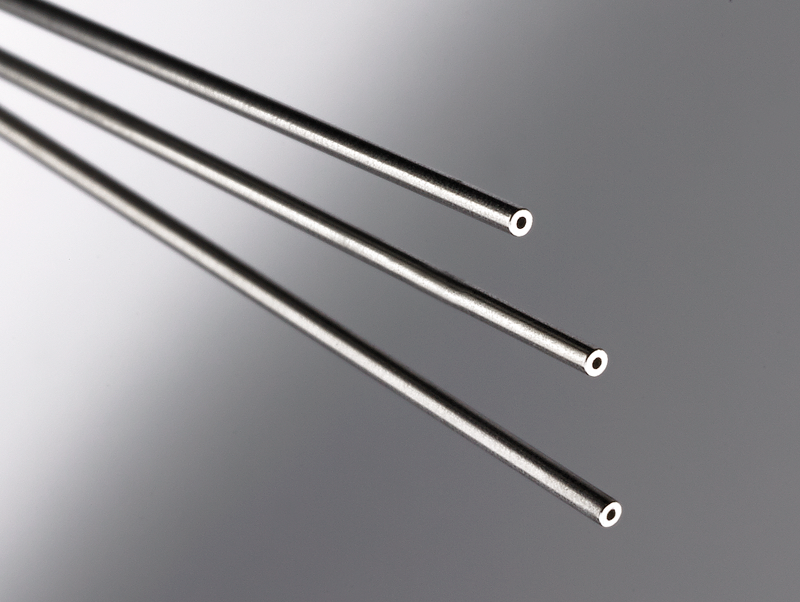Understanding Stainless Steel Capillary Tubes: Precision Engineering for Modern Applications
Stainless steel capillary tubes are high-precision, small-diameter tubes with thin walls designed for exacting applications. These tubes are crafted from stainless steel grades like 304, 316, and 321 to deliver strength, corrosion resistance, and unparalleled accuracy.
Whether used in delicate medical instruments or industrial fluid systems, stainless steel capillary tubes are indispensable for processes requiring precision and durability.
Why Stainless Steel?
The choice of stainless steel for capillary tubes stems from its unique properties:
- Corrosion Resistance: Withstand exposure to harsh chemicals and environments.
- High Strength: Durable under extreme pressure and temperature.
- Smooth Surface: Ideal for fluid and gas transfer without contamination.
- Hygienic: Non-reactive, making it suitable for medical and food applications.
Key Features of Stainless Steel Capillary Tubes
- Dimensional Precision
Capillary tubes are manufactured with tight tolerances, ensuring consistent performance in applications that require exact measurements. - Thin Walls and Narrow Diameters
These features enable controlled fluid or gas flow in highly sensitive equipment. - Material Versatility
Available in different grades, stainless steel capillary tubes cater to diverse industries with varying requirements. - Customization
They can be tailored in terms of length, diameter, and surface finish to meet specific needs.
Applications of Stainless Steel Capillary Tubes
Stainless steel capillary tubes find utility across various sectors:
1. Medical Field
- Used in surgical instruments, cannulas, and catheters.
- Enable precise fluid delivery in diagnostic and therapeutic devices.
2. Industrial Processes
- Essential in manufacturing and quality control for delivering gases and fluids with precision.
- Used in pressure measurement and flow systems.
3. Automotive Sector
- Integral to fuel injection systems for efficient engine performance.
- Play a key role in brake fluid transfer systems.
4. Aerospace Industry
- Used in hydraulic and fuel systems, designed to withstand extreme conditions.
5. Food and Beverage Industry
- Facilitate hygienic transfer of liquids, ensuring compliance with health regulations.
6. Chemical and Petrochemical Industries
- Handle corrosive fluids and gases in laboratories and production facilities.
Manufacturing Process of Stainless Steel Capillary Tubes
Precision is critical in the production of stainless steel capillary tubes. Here’s an overview of the process:
- Raw Material Selection
Stainless steel grades are chosen based on the desired mechanical and chemical properties. - Cold Drawing
The stainless steel is drawn through progressively smaller dies to achieve the required dimensions. - Heat Treatment
Annealing improves ductility and reduces internal stresses. - Surface Finishing
Polished surfaces enhance corrosion resistance and ensure smooth fluid transfer. - Testing
Rigorous quality checks are conducted to ensure the tubes meet industry standards.
Benefits of Stainless Steel Capillary Tubes
1. Enhanced Corrosion Resistance
Ideal for environments exposed to moisture, chemicals, or extreme temperatures.
2. High Precision
Support accurate measurement and transfer of fluids, essential for delicate operations.
3. Durability
Withstand mechanical stress, pressure, and temperature fluctuations without deforming.
4. Versatility
Serve various industries, adapting to specific applications with ease.
5. Longevity
The robust nature of stainless steel ensures a longer lifespan, reducing maintenance costs.
Choosing the Right Capillary Tube
When selecting stainless steel capillary tubes, consider these factors:
- Grade of Stainless Steel
Choose a grade based on environmental exposure and application requirements. - Dimensions
Ensure the tube’s diameter and thickness align with the intended use. - Surface Finish
Opt for polished surfaces in applications requiring high cleanliness standards. - Certification
Verify compliance with international standards like ASTM, ISO, and FDA.
Care and Maintenance
Proper care extends the life of stainless steel capillary tubes.
- Regular Cleaning: Use appropriate cleaning solutions to remove residue and contaminants.
- Routine Inspections: Check for blockages, corrosion, or mechanical damage.
- Proper Handling: Avoid bending or overloading to maintain the tube’s integrity.
- Safe Storage: Store in a dry and controlled environment to prevent oxidation.
Future Trends in Stainless Steel Capillary Tubes
As industries evolve, stainless steel capillary tubes are adapting to meet new challenges:
- Microfluidics: Emerging applications in biotechnology and nanotechnology.
- Improved Alloys: Development of stainless steel grades with superior performance.
- Green Manufacturing: Adoption of sustainable practices to reduce environmental impact.
- Automation: Integration of robotics for precision manufacturing and testing.
Conclusion
Stainless steel capillary tubes are integral to industries requiring precision and reliability. Their corrosion resistance, strength, and adaptability make them indispensable in modern engineering and manufacturing.
Whether for medical devices, industrial applications, or aerospace systems, stainless steel capillary tubes deliver unmatched performance. With proper selection and maintenance, they ensure long-term efficiency and durability, solidifying their role as a cornerstone of innovation.














Post Comment